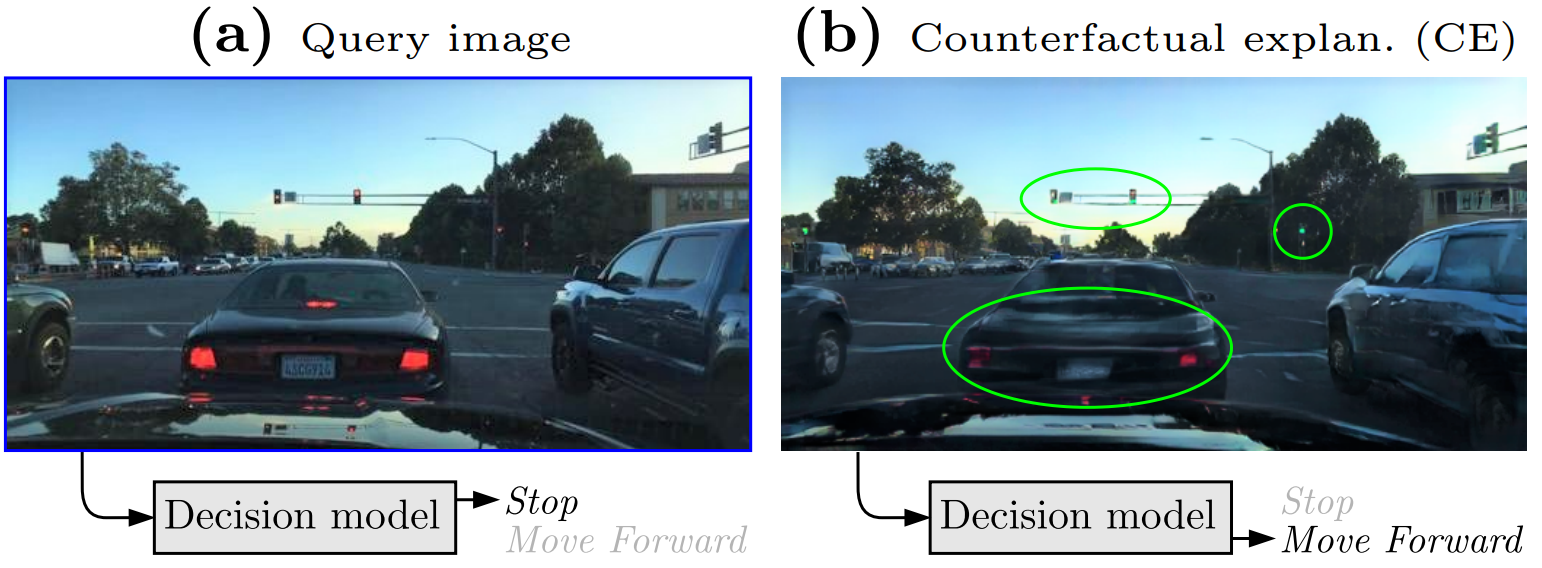STEEX: Steering Counterfactual Explanations with Semantics
Paul Jacob Éloi Zablocki Hédi Ben-Younes Mickaël Chen Patrick Pérez Matthieu Cord
ECCV 2022
Abstract
As deep learning models are increasingly used in safety-critical applications, explainability and trustworthiness become major concerns. For simple images, such as low-resolution face portraits, synthesizing visual counterfactual explanations has recently been proposed as a way to uncover the decision mechanisms of a trained classification model. In this work, we address the problem of producing counterfactual explanations for high-quality images and complex scenes. Leveraging recent semantic-to-image models, we propose a new generative counterfactual explanation framework that produces plausible and sparse modifications which preserve the overall scene structure. Furthermore, we introduce the concept of "region-targeted counterfactual explanations", and a corresponding framework, where users can guide the generation of counterfactuals by specifying a set of semantic regions of the query image the explanation must be about. Extensive experiments are conducted on challenging datasets including high-quality portraits (CelebAMask-HQ) and driving scenes (BDD100k).
Video
BibTeX
@inproceedings{steex2022,
author = {Paul Jacob and
{\'{E}}loi Zablocki and
Hedi Ben{-}Younes and
Micka{\"{e}}l Chen and
Patrick P{\'{e}}rez and
Matthieu Cord},
title = {STEEX: Steering Counterfactual Explanations with Semantics},
booktitle = {ECCV},
publisher = {Springer},
year = {2022}
}
